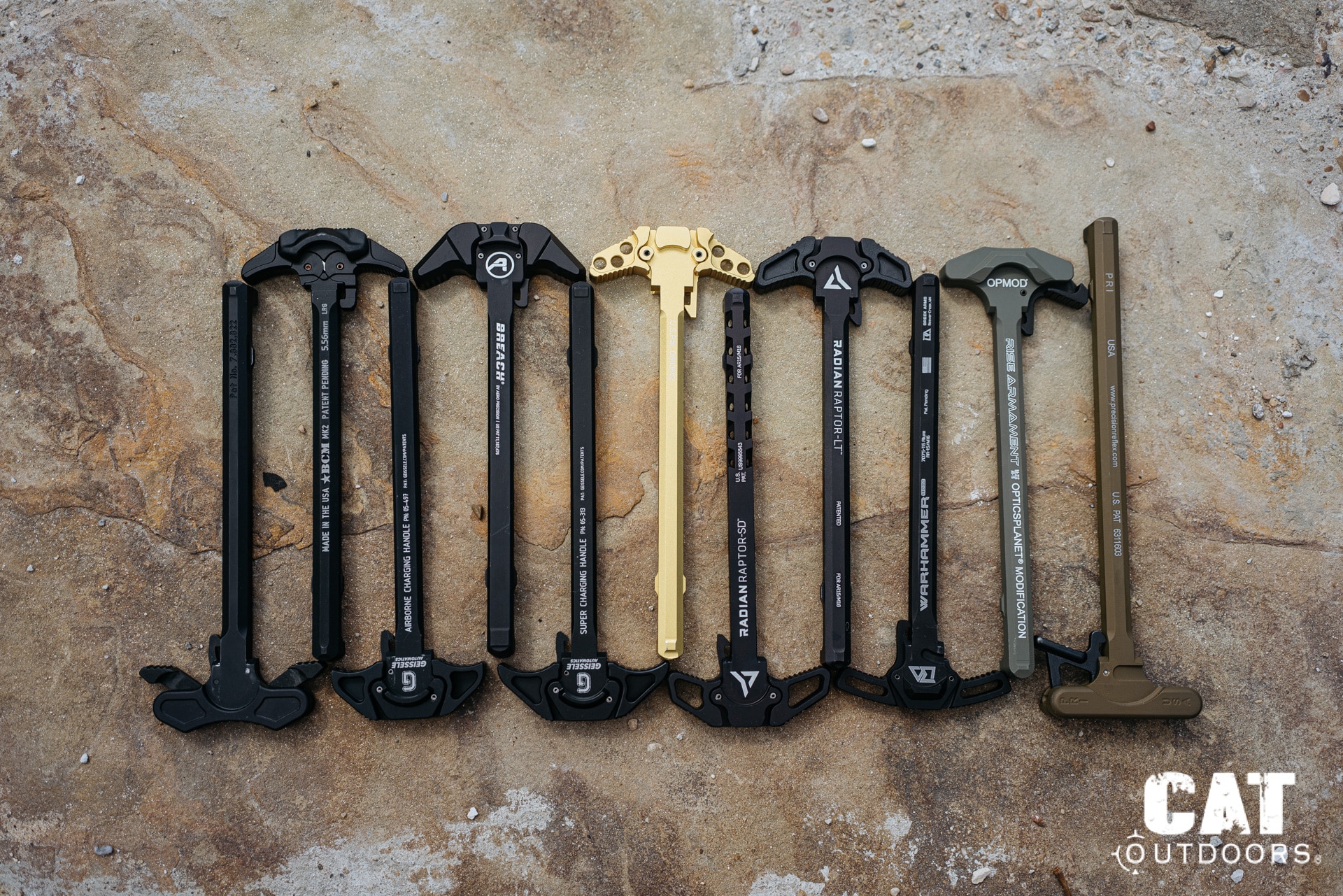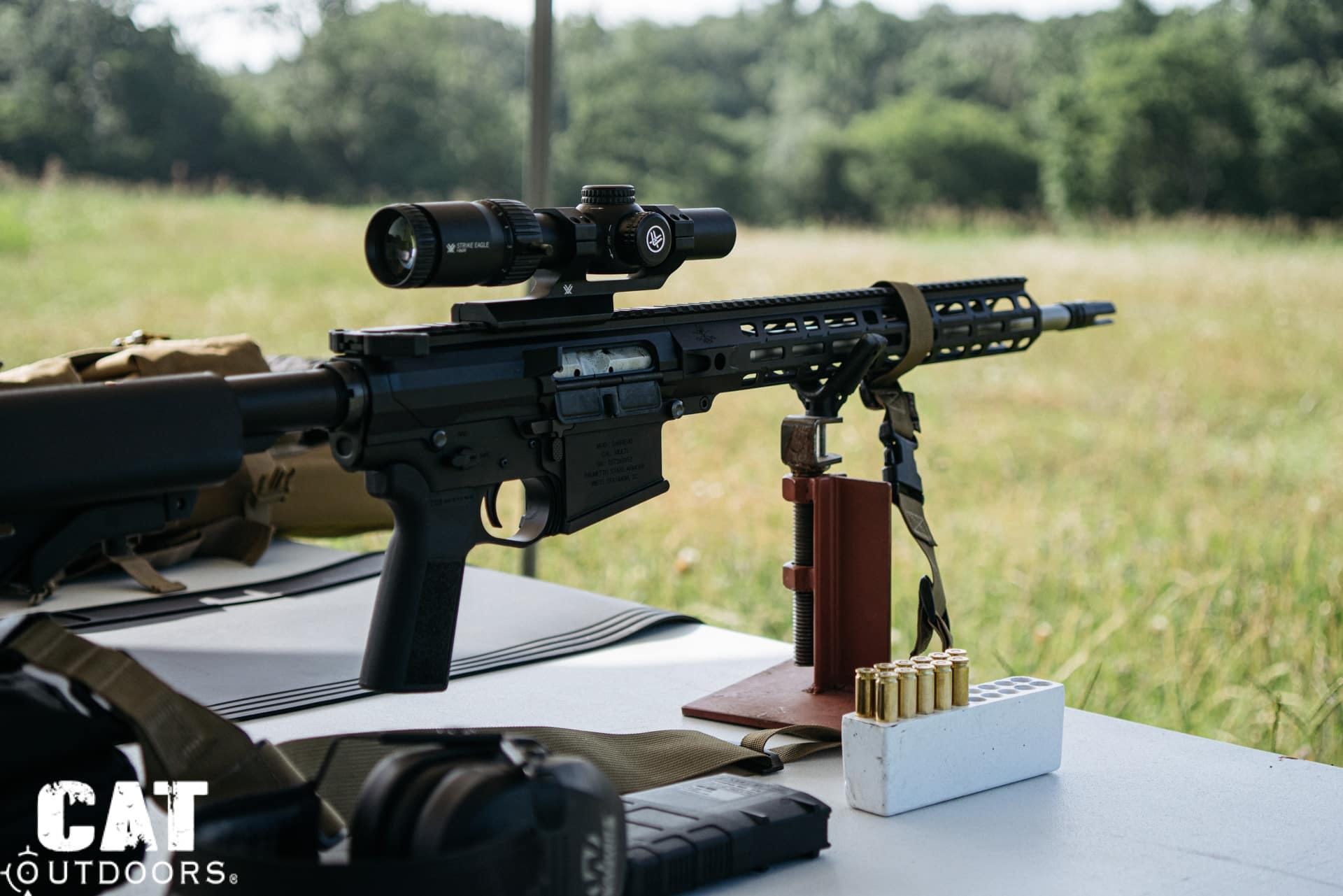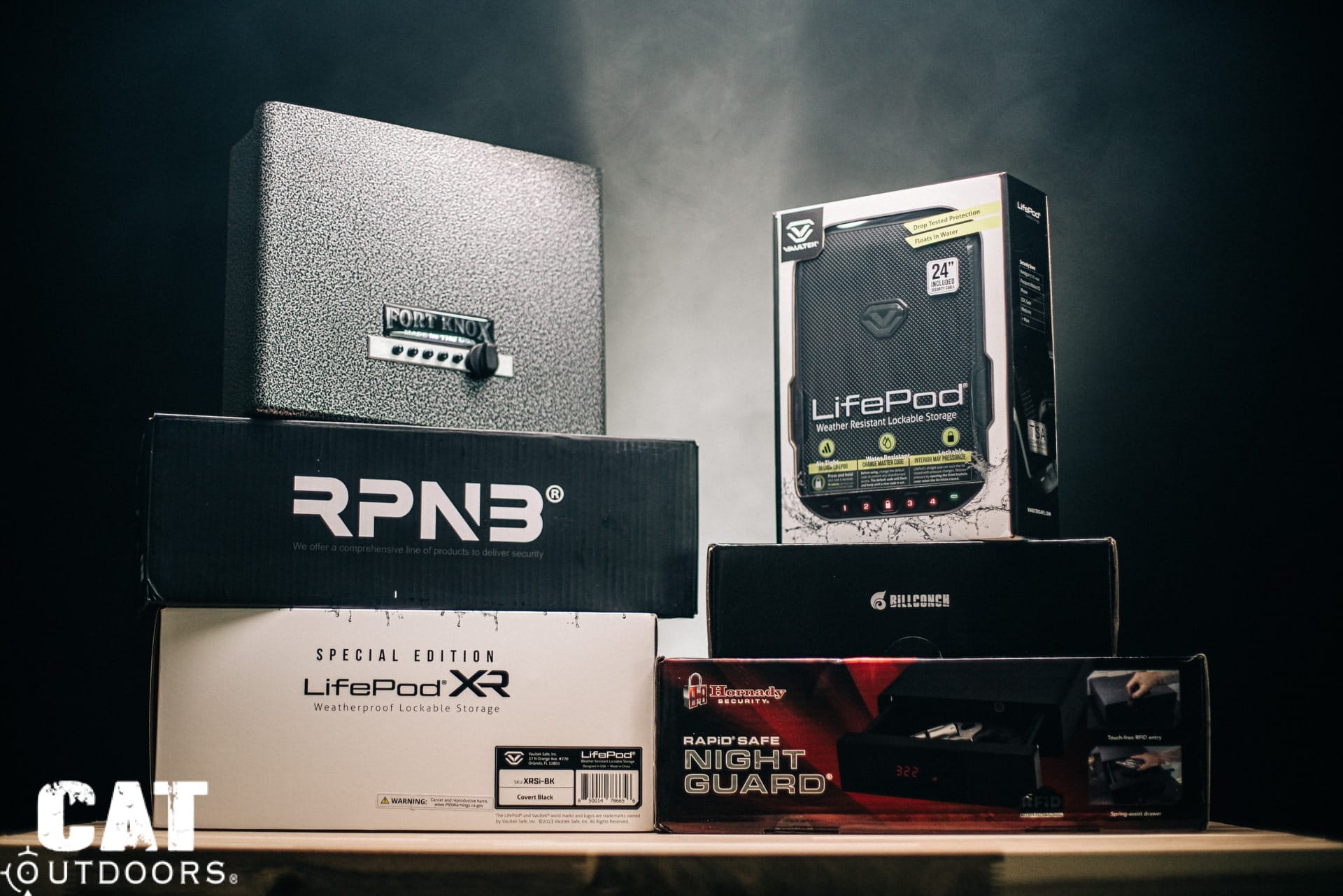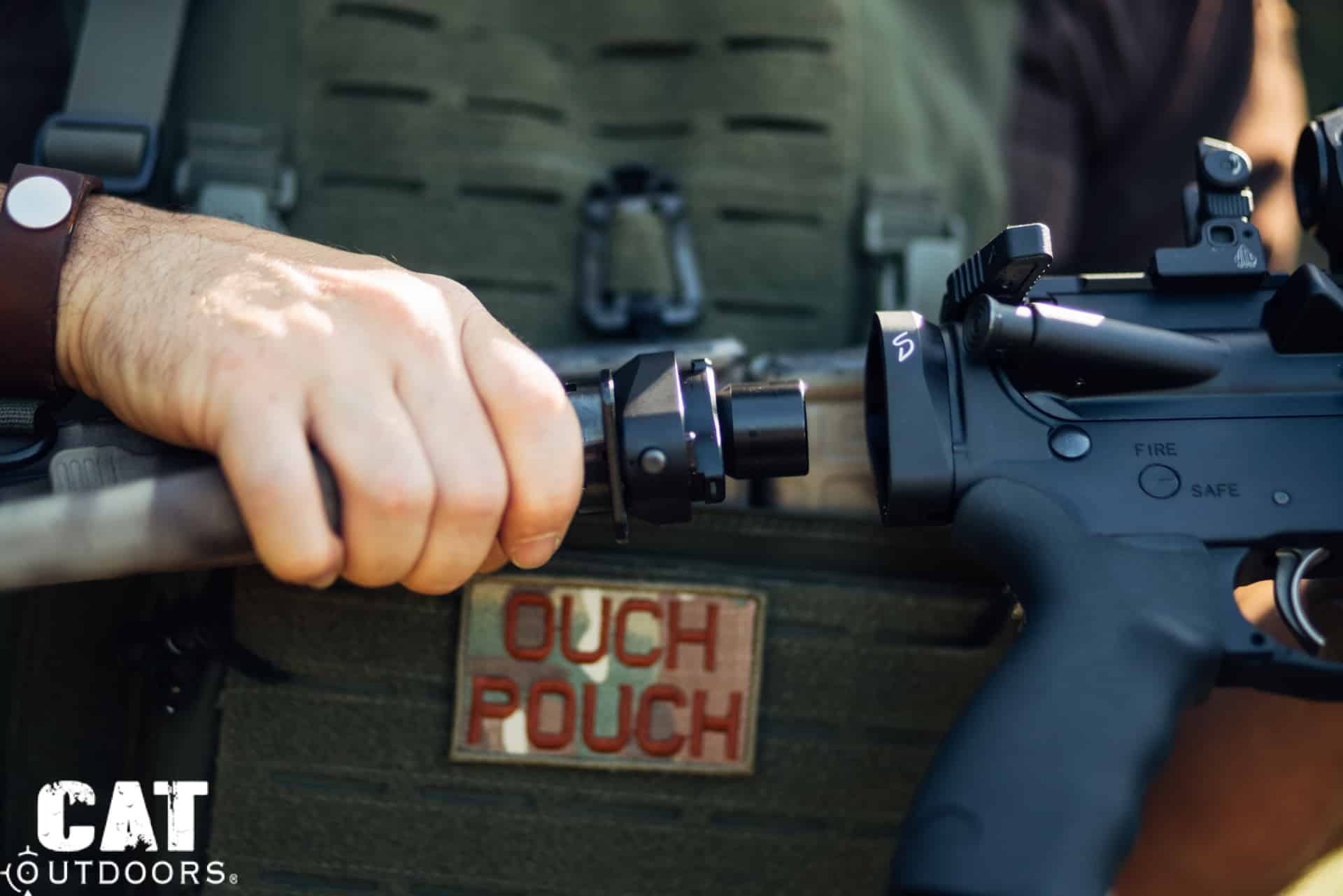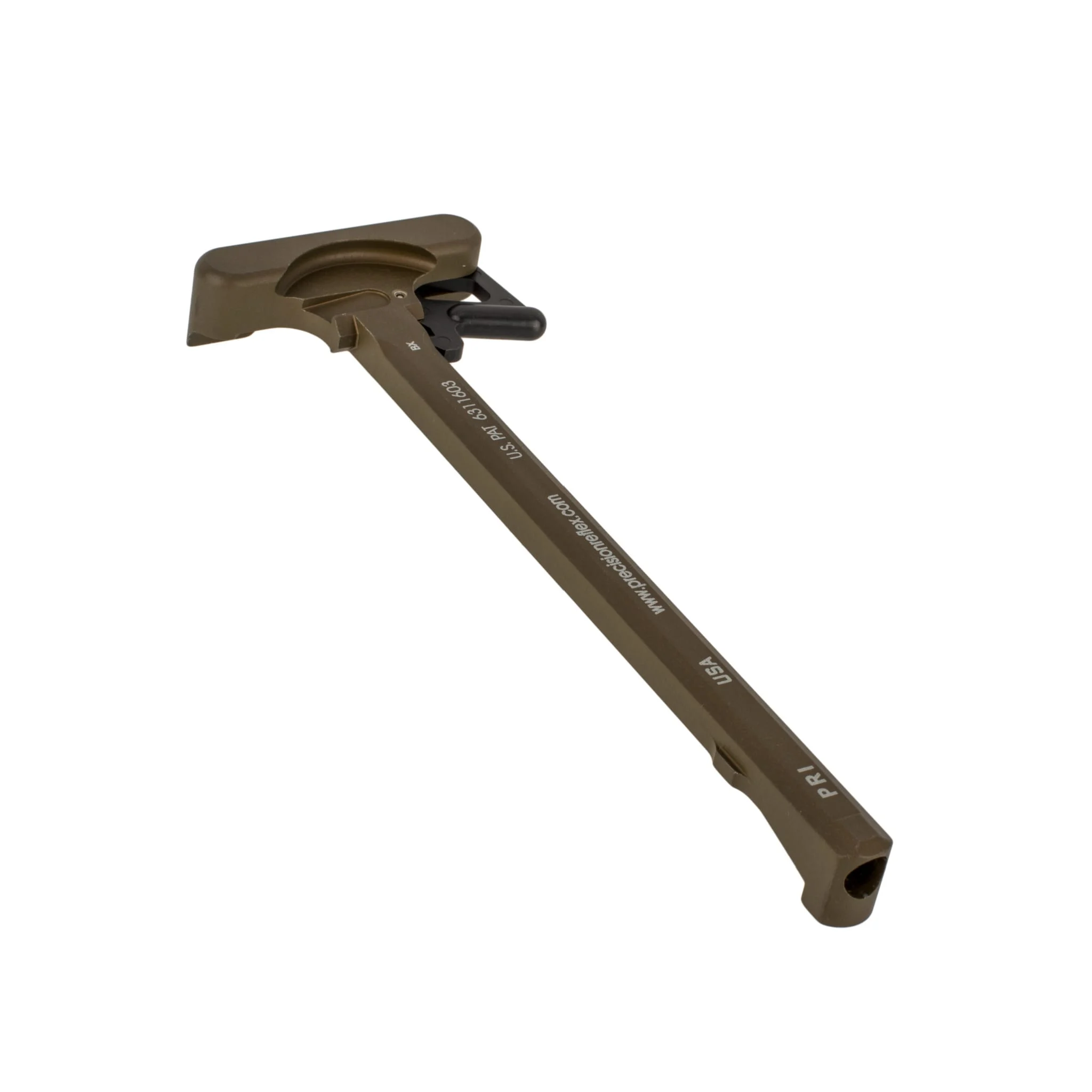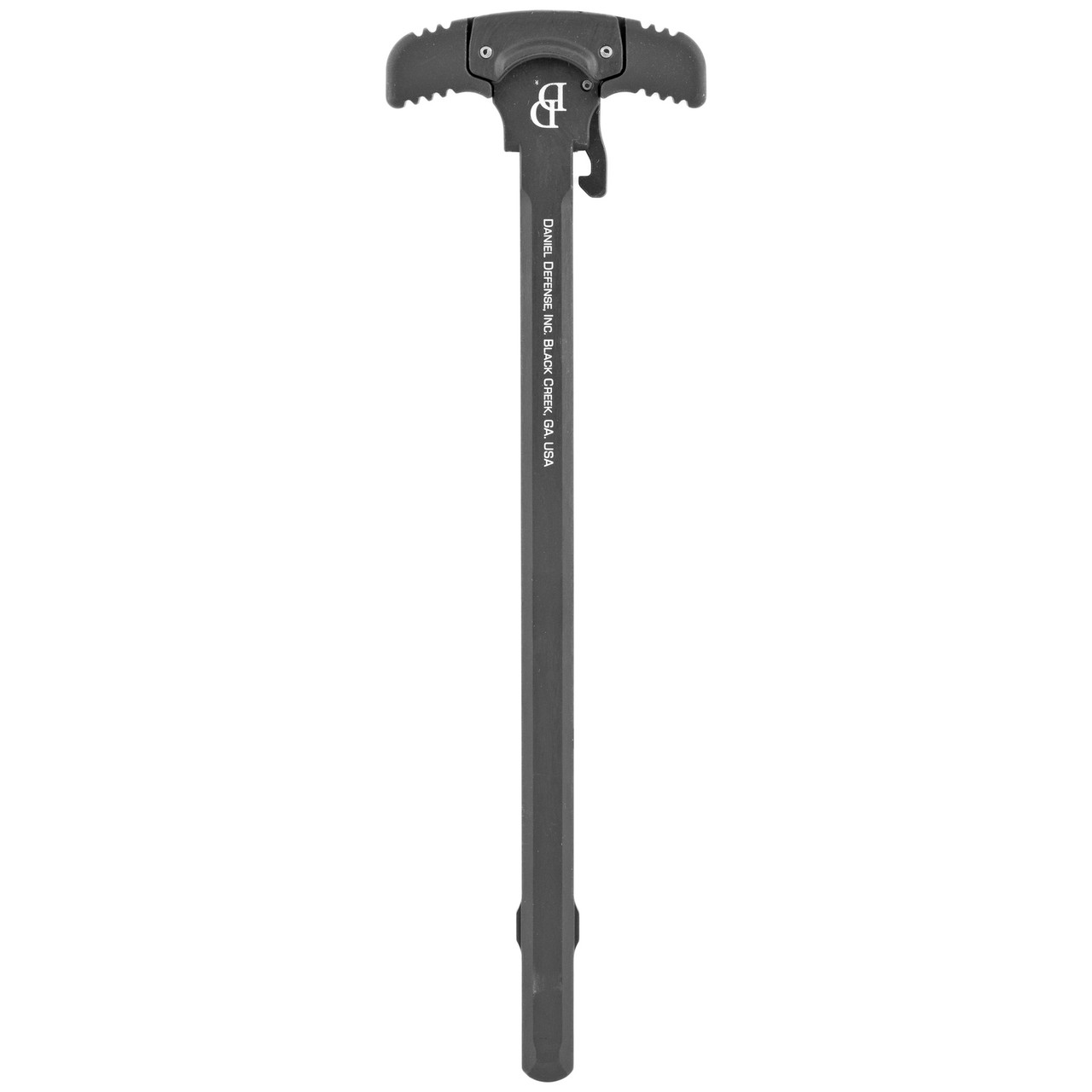7 Best AR-15 Charging Handles [2025]: Hands-On Tested
Want to make that tap-rack-bang feel buttery smooth?
Whether you’re building fresh or upgrading a rifle that’s seen some miles, the charging handle is your command lever. It’s how you run the gun. Better leverage, cleaner clears, fewer snags, and less gas to the face when you’re shooting suppressed — all from one simple upgrade.
But with so many designs out there, it’s easy to get lost in the weeds.
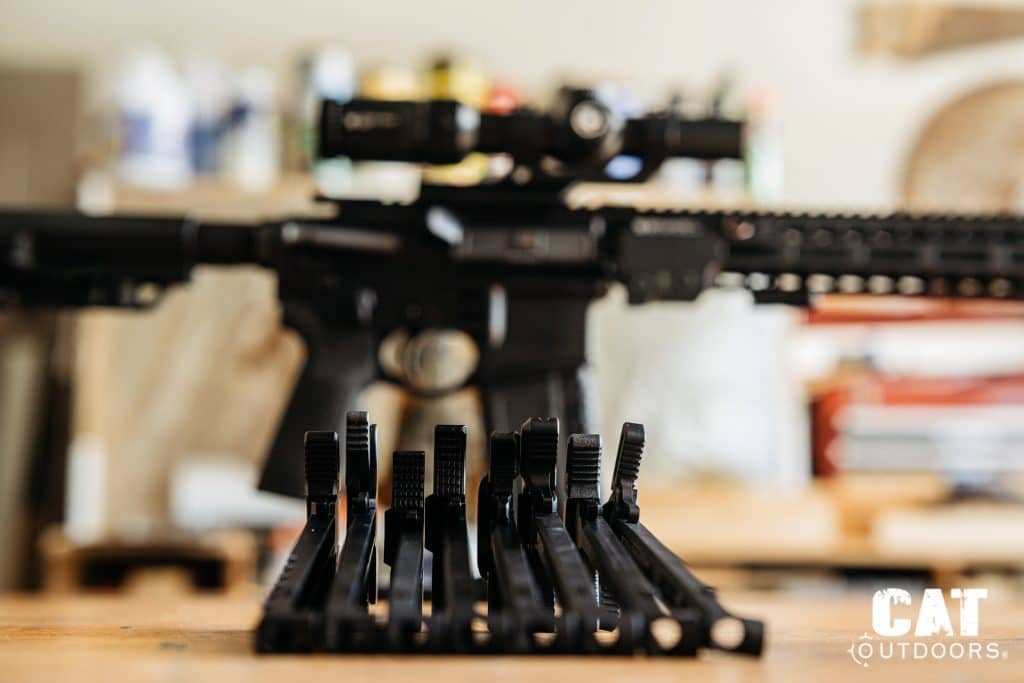
Which design suits your hands, your kit, and your wallet? Which deserve the premium, and which will eat your gloves like a lawnmower?
We put the top contenders through their paces and built this guide to the best AR-15 charging handles to help you choose with confidence.
Rack it back; let’s go.
1. BEST OVERALL: Radian Raptor LT (R0148)
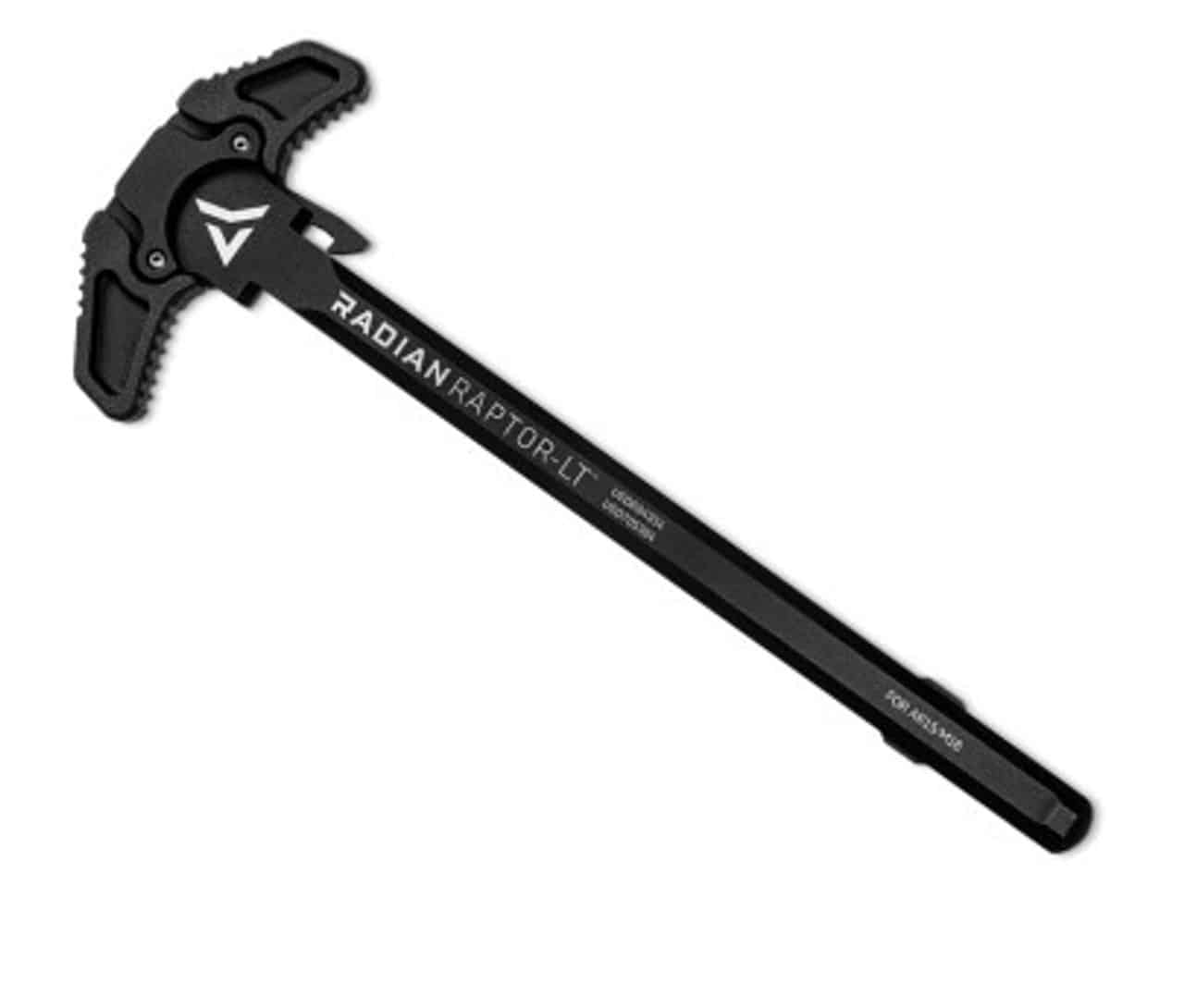
Radian Raptor LT (R0148)
Midway USA (See Price)
AT3 Tactical (See Price)
Brownells (See Price)
Classic Firearms (See Price)
Sportsman’s Warehouse (See Price)
Cabela’s (See Price)
GrabAGun (See Price)
Bereli (See Price)
Scheels (See Price)
KyGunCo (See Price)
If you’ve ever tried to rip a mil‑spec handle with cold fingers and a chunky optic in the way, you already get why the Raptor LT if a nice upgrade. It’s the ambidextrous charging handle for people who want a smoother pull and better leverage without turning their rifle into a snag magnet.
The defining touch is its 7075‑T6 aluminum core with a fiberglass‑reinforced polymer over‑mold on the ears—grippy where you touch it, metal where it counts.
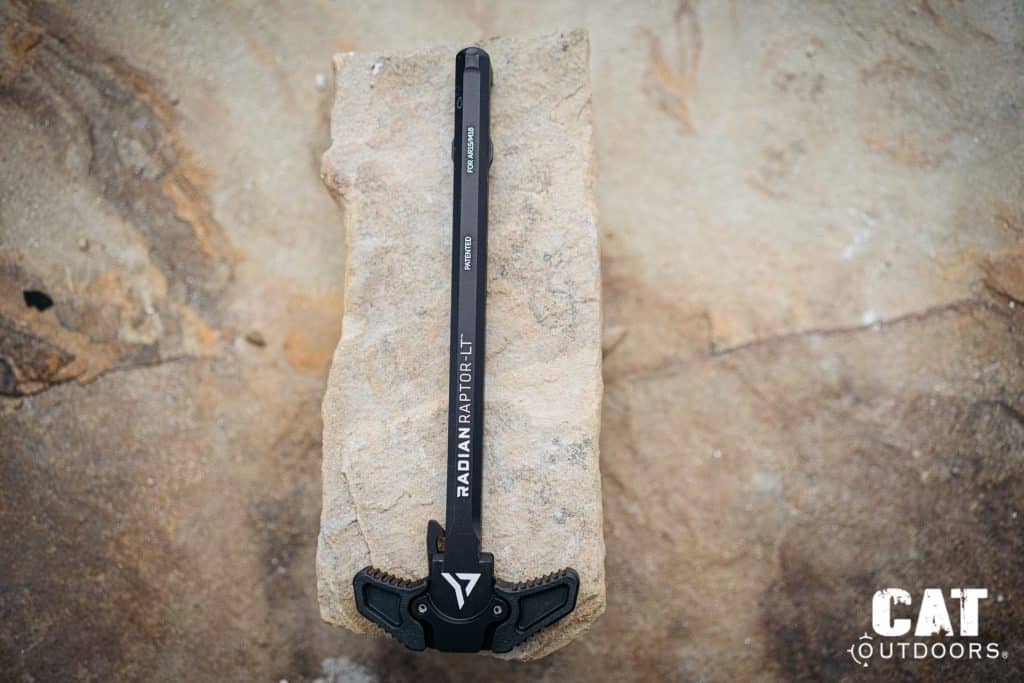
What We Like: The feel is the hook. The pull is smooth and straight, the latch engagement is positive, and there’s no wiggle in the track. In our testing, the LT was the slickest‑running option in this price lane.
Ambidextrous geometry is dialed. Whether you blade with the side of your hand or pinch the ears, the motion is intuitive from either side. The grip is also excellent without being punishing.
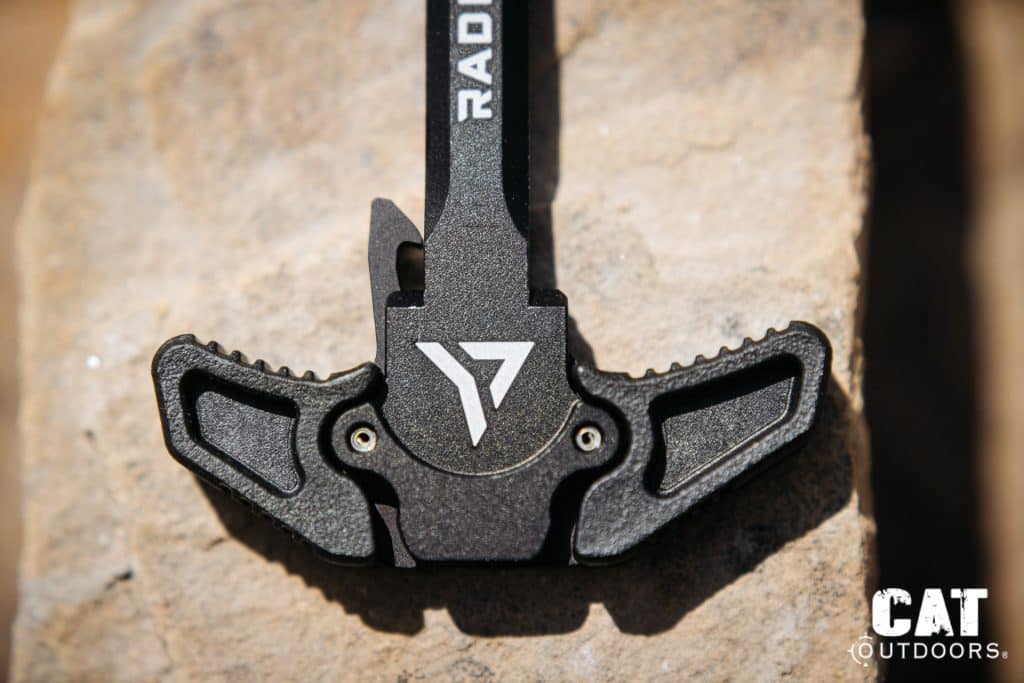
It’s made well: a hard‑anodized 7075‑T6 core for strength, then polymer over‑molded ears for traction and durability; that overmold grabs well without shredding gloves.
The overall size hits the sweet spot — big enough for a confident purchase but compact enough to stay clear of optics and clothing. Weight lands around 1.2 ounces, and it fits cleanly under common LPVOs and red dots without crowding the rear of the receiver.
Really, the value seals the deal. You get the core Raptor ergonomics and ambi mechanism with a friendlier price than full‑metal variants.
Flaws but Not Dealbreakers: Not the absolute lowest-profile option. If your rifle lives on plate carriers or you prioritize minimal snag above all else, the Geissele Airborne trims more lever and will sit tighter.
It’s not the SD gas-mitigation model. If suppressed shooting is your daily bread, the Raptor SD or handles designed specifically to vent/deflect gas will reduce blowback more effectively.
Polymer overmold skepticism persists among some shooters. Practically speaking, the metal core bears the load; the overmold is for grip and protection. Long-term failure reports are rare, but aesthetics and feel are subjective.
Bottom Line: The Raptor LT is the go-to choice for most shooters. It’s light, ambi, smooth, and tough enough to outlast your rifle. Unless you have a very specific need like suppression or ultra-low profile duty use, this is the charging handle most operators buy and forget about.
2. BEST LOW-PROFILE OPTION: Geissele Airborne Charging Handle (05-497B)
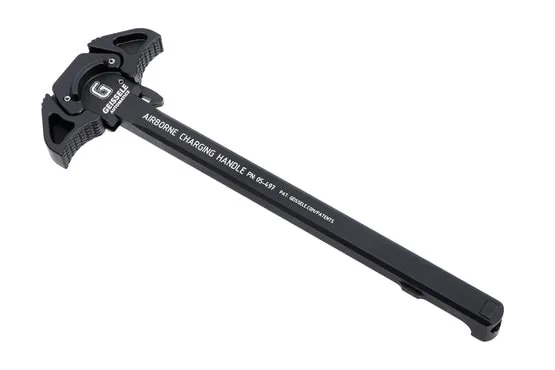
Geissele Airborne Charging Handle (05-497B)
Midway USA (See Price)
AR-15 Discounts (See Price)
Sportsman’s Warehouse (See Price)
AT3 Tactical (See Price)
GrabAGun (See Price)
Classic Firearms (See Price)
Euro Optic (See Price)
GunMag Warehouse (See Price)
BattleHawk Armory (See Price)
Black Rifle Depot (See Price)
Not everyone wants a big, flashy set of ears sticking out of their receiver. The Geissele Airborne Charging Handle is for the shooter who values function over flair—the one who’s been smacked by a wide lever while running a sling or brushing a doorway.
Originally built for U.S. Special Operations Command’s URG-I program, this handle proves that small doesn’t mean delicate. It’s still 7075-T6 aluminum, still ambidextrous, but it trades size for precision.
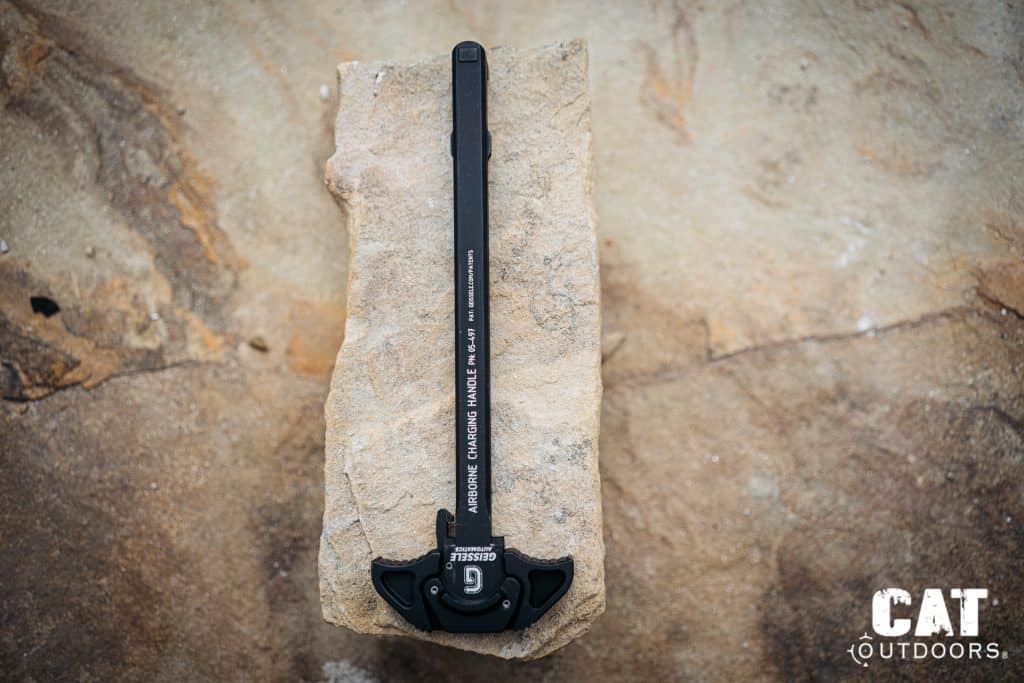
What We Like: Our first impression of The Airborne is control. The shorter, contoured levers feel deliberate when you pull—no flex, no wobble, no wasted motion. It’s easy to grasp even with gloves, but never feels oversized or clumsy. The motion is firm yet smooth, and the tactile checkering gives just enough bite to stay secure without chewing through material.
It also has remarkable clearance under optics and magnifiers. If you run an LPVO or red dot with a riser, the levers stay tucked tight enough to avoid interference. If your rifle already feels crowded at the rear of the upper, the difference in footprint is immediately noticeable.
When we run it, there’s no rattle against the receiver or uneven latch pressure. It’ll handle thousands of manipulations without loosening up. That stiffness translates to predictable reliability during reloads or malfunction clears.
Geissele’s gas-deflecting fence at the rear is subtle but effective. It won’t eliminate blowback entirely, but it does help redirect a portion of it away from your face. On short-barreled uppers or mid-gas setups, that bit of mitigation makes shooting less punishing—especially for left-handed users.
Flaws but Not Dealbreakers: You do lose a touch of leverage compared to wider handles like the Geissele Super or Radian Raptor. It’s the price of a tighter footprint. Shooters with large hands may prefer a bigger grab.
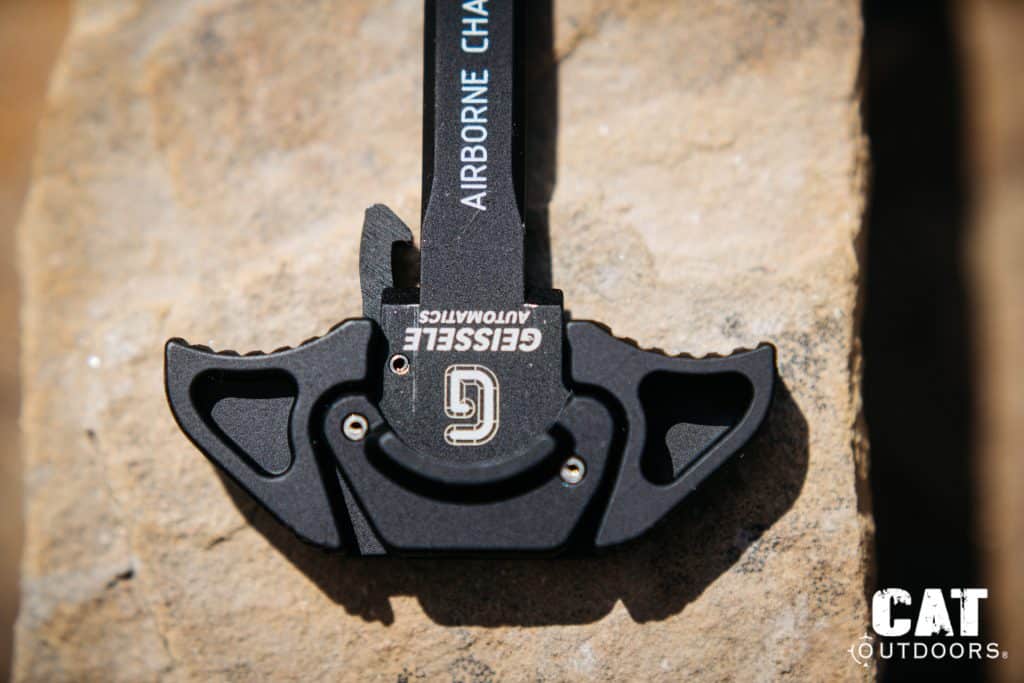
It’s also not cheap—Airborne pricing comes in around $107. You’re buying refinement, not a budget option.
Gas management is good, not groundbreaking. It helps, but it’s not a dedicated gas-buster like the PRI or Raptor SD.
Bottom Line: The Geissele Airborne is the charging handle for people who hate gear snags and wasted movement. It’s compact, controlled, and built for rifles that actually see use beyond the bench. If you run your gun hard and prefer sleek over showy, this is the one that earns its place.
3. BEST HARD-USE WORKHORSE: BCM GUNFIGHTER MK2 (BCM‑GFH‑MK2‑LRG‑AMBI)
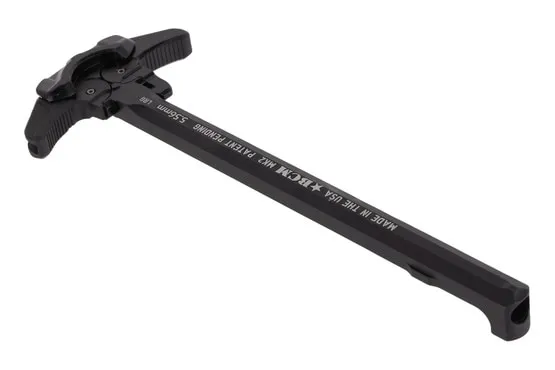
BCM GUNFIGHTER MK2
Brownells (See Price)
Midway USA (See Price)
GrabAGun (See Price)
BattleHawk Armory (See Price)
Scheels (See Price)
The BCM MK2 is an ambidextrous handle built for rifles that see abuse, like duty rigs or high‑round‑count range days, without turning into a snaggy set of wings. It keeps the leverage you want, ditches pinch points, and adds exhaust channels that push gas forward instead of into your eyes.
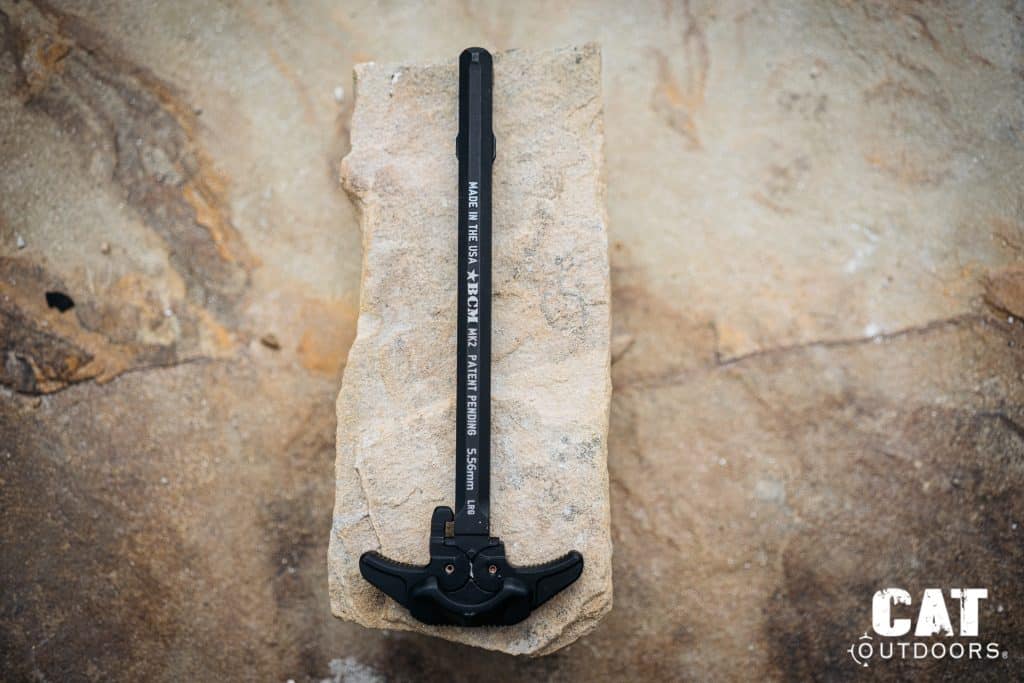
What We Like: The first pull feels right: clean latch engagement, no wobble, and a smooth, straight draw whether you blade it or pinch the ears. Across hands‑on impressions and reviewer clips, the MK2 runs like a part designed for hard use.
The ambidextrous mechanics are good. BCM reworked the geometry so the energy of a hard charge rides close to the rifle’s centerline and the grasp surface stays continuous – no awkward corners, no skin‑pinch when you get aggressive. It’s predictable, repeatable manipulations under stress, which is what you want.
Gas management is better than plain ambi handles. Upper, lower, and side exhaust channels vent blowback away from your face. Several users even prefer it to the Raptor for gas comfort. It’s not magic, but it helps.
It’s incredibly durable. The MK2 is machined from 7075‑T6 and feels like it will outlast the upper it rides in. Hard use, glove pulls, and one‑handed rips don’t faze the body or latches, and finish wear stays cosmetic.
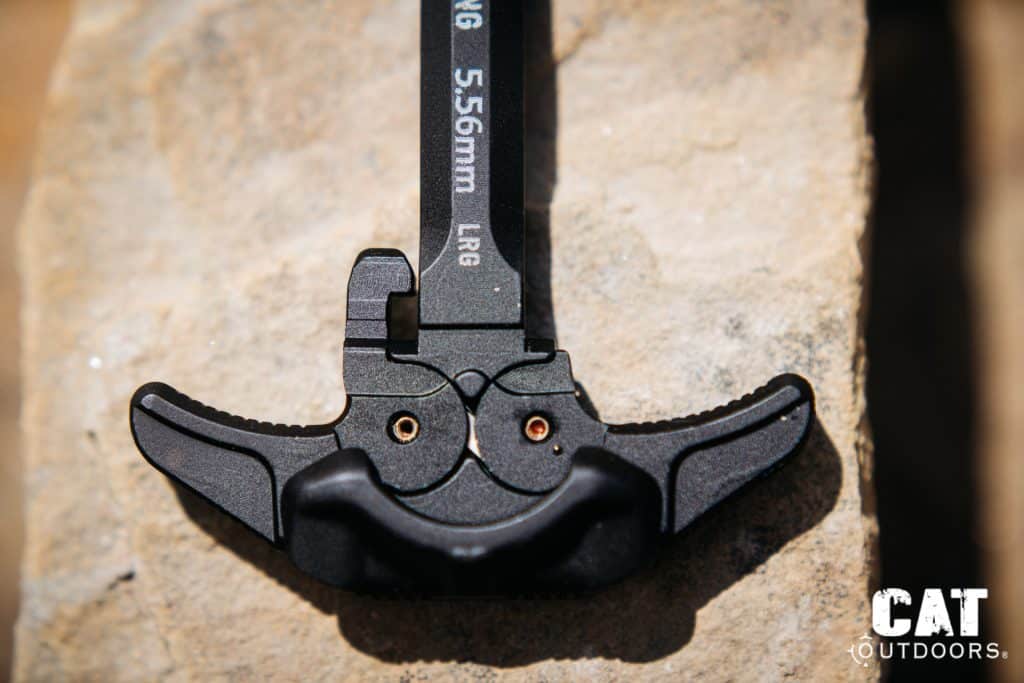
Despite the “Large” lever spec, the profile is sensibly shaped. The ears are easy to find with gloves but the contours are smoothed to stay relatively snag‑free compared to the big‑ear crowd, and it clears LPVO turrets without drama.
Value is solid for a hard‑use part. Street pricing often sits around the $80s, and availability is good, so it’s easy to standardize across multiple uppers.
Flaws but Not Dealbreakers: Size is still size. The “Large” levers are more glove‑friendly than truly low‑profile. If your rifle lives on armor or rubs seatbelts all day, you may prefer the BCM Medium latch or the ultra‑compact Geissele Airborne for minimal snag.
Gas control is improved, not absolute. The channels help, but they don’t seal the rear like gasketed designs, and they don’t replace tuning. If blowback is your #1 complaint, a purpose‑built gas‑buster or a sealed handle may do better.
Bottom Line: Pick the BCM MK2 Ambi Large if you want a charging handle that shrugs off rough manipulations, runs smoother than mil‑spec, and takes the edge off gas blowback without turning into a snag hazard. It’s a practical, class‑ready choice: install it, beat on it, and move on to more important problems.
4. BEST FOR SUPPRESSED SHOOTING: Radian Raptor SD (R0006)
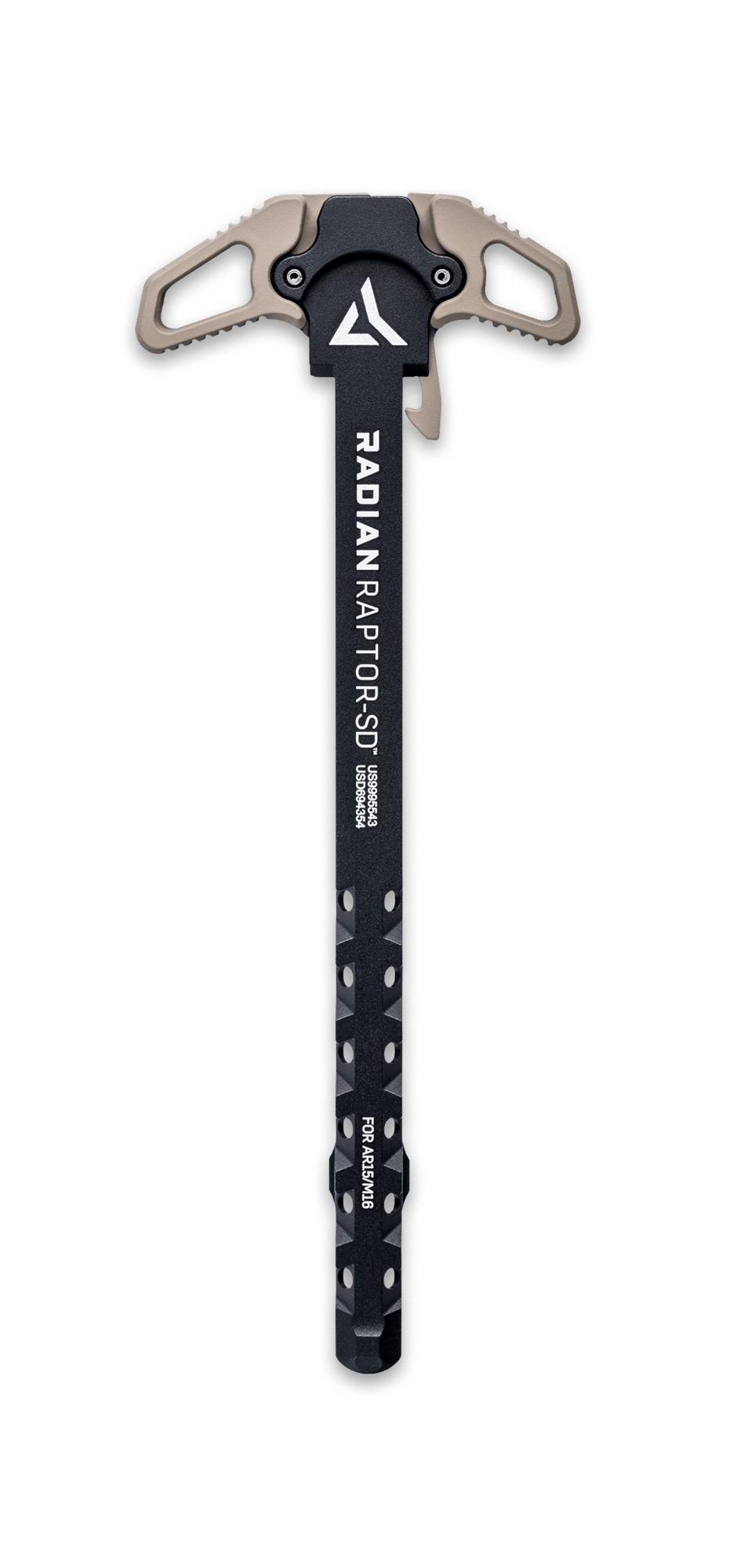
Radian Raptor SD (R0006)
Brownells (See Price)
AR-15 Discounts (See Price)
GrabAGun (See Price)
Classic Firearms (See Price)
GunMag Warehouse (See Price)
AT3 Tactical (See Price)
Cabela’s (See Price)
BattleHawk Armory (See Price)
Bereli (See Price)
Scheels (See Price)
If you’ve ever touched off a string with a can and felt your eyes water, you know the problem: gas blowing straight back through the handle cutout. The Radian Raptor SD tackles that with a ported shaft that vents gas down and forward. It’s an ambidextrous upgrade for shooters looking for blowback relief without re‑engineering the whole gun.
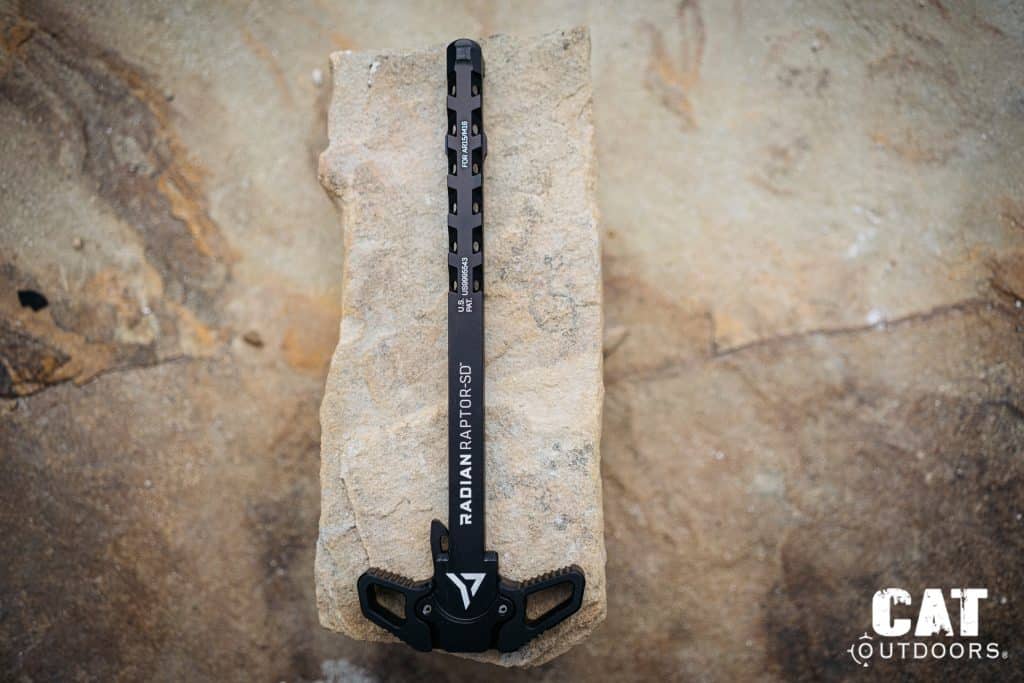
What We Like: The SD produces a measurable, on‑gun difference. It cuts blowback to the shooter’s face by roughly a quarter. (Obviously, exact numbers will vary by barrel, can, and gas system, but this isn’t placebo). You feel it most during longer strings where gas fatigue usually sets in.
The ambidextrous feel is pure Raptor: smooth draw, clean latch engagement, and intuitive “blade” or finger‑and‑thumb pulls from either side. Installation is drop‑in; no fitting, no drama. It’s the familiar Raptor ergonomics you already know, just with gas‑venting baked in.

Community feedback tracks with our impressions: the SD takes the edge off gas on gassier SBRs and 11.5–12.5 builds, even if it’s not a total cure. Multiple users tell us there’s a “noticeable difference” versus standard handles, especially with high‑backpressure cans.
Also, it plays nicely under optics. The ears are assertive enough for gloved hands but not absurdly wide, and the weight hovers around the mid‑1‑ounce range, so it doesn’t crowd LPVO turrets or upset balance at the rear. Fit and finish are clean, with no wobble in the channel.
Lastly, the materials and machining are great. You’re getting a 7075‑T6 aluminum body, Type III hard anodizing, and the same robust construction Raptor handles are known for.
Flaws but Not Dealbreakers: It’s not a magic wand. Results are setup‑dependent and won’t replace proper tuning; an adjustable gas block or reduced‑port optimization still matters. Expect comfort gains, not a sealed‑up action.
Some shooters find traditional gas‑redirecting designs (like the PRI Gas Buster) reduce blowback more in certain builds. Others see the SD as “good enough” with better ambi feel. That split shows up across long‑term and comparison threads.
Lastly, the price sits in premium territory. You’re paying for Radian ergonomics and the ported shaft; if budget is the only priority, a standard ambi handle plus RTV or tuning can be cheaper (if less elegant). You can pick these up for around $135.
Bottom Line: If you run a 5.56 can and want an immediate, noticeable reduction in gas to the face without giving up the Raptor’s slick ambi feel, the Raptor SD is the pick we’d recommend. Tune the gun when you can; in the meantime, this makes suppressed shooting meaningfully more comfortable. Install it, shoot more, blink less.
5. MAXIMUM GRIP PURCHASE PICK: Geissele Super AR‑15 CH (05‑313B)
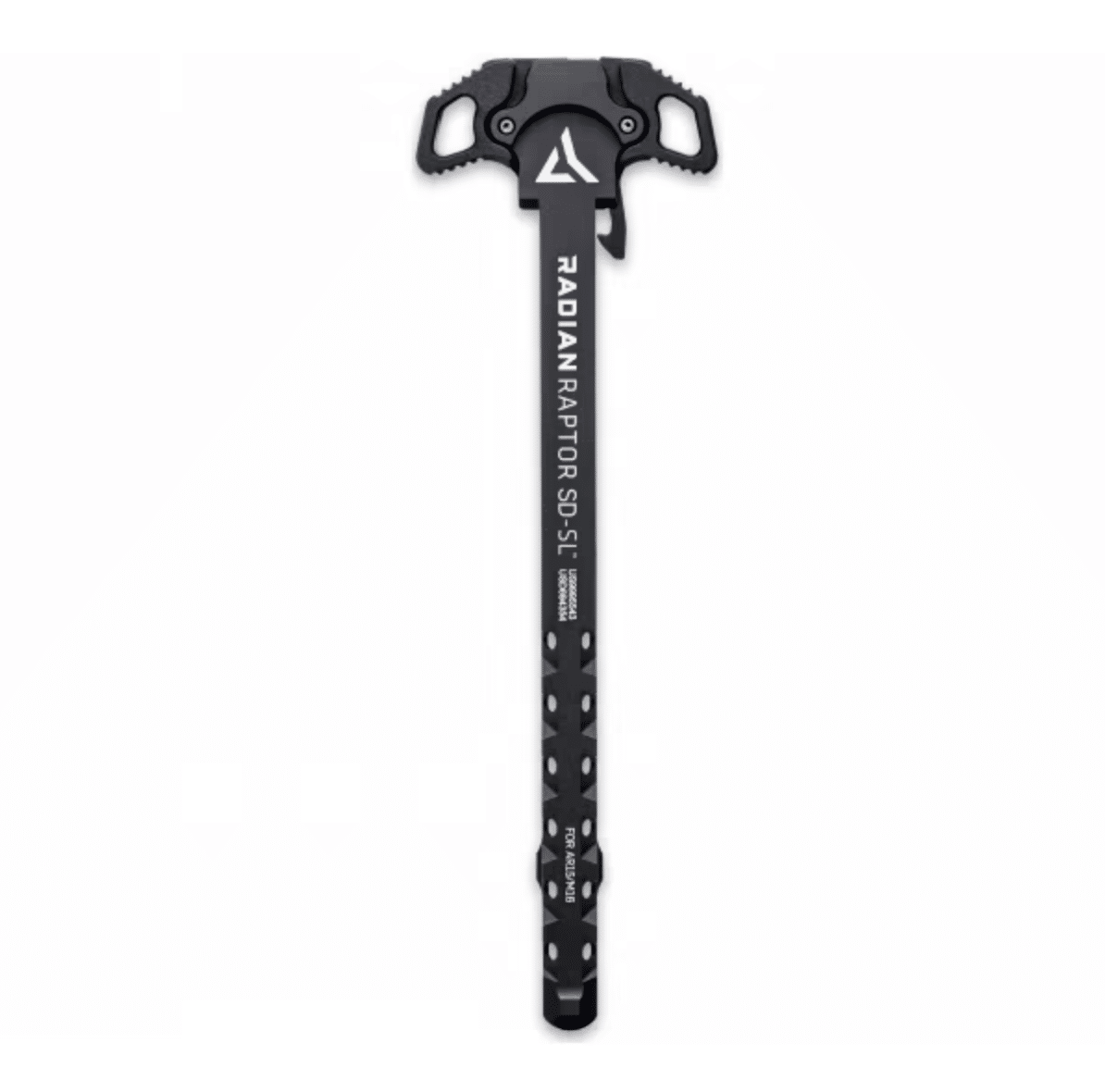
Geissele Super Charging Handle
Sportsman’s Warehouse (See Price)
Brownells (See Price)
AR-15 Discounts (See Price)
GrabAGun (See Price)
AT3 Tactical (See Price)
GunMag Warehouse (See Price)
Classic Firearms (See Price)
Euro Optic (See Price)
Black Rifle Depot (See Price)
BattleHawk Armory (See Price)
Ever try to rack a handle with an LPVO crammed over the ejection port and thick gloves on? This Geissele Super CH is for shooters who want fast, confident grabs and easy reach around turrets, magnifiers, and backup sights.
It’s an ambidextrous, 7075‑T6 charging handle with long, equal‑length levers and aggressive checkering. One defining trait is the extended ears deliver leverage without slop, so malfunction clears or one‑handed pulls feel deliberate, not delicate.

What We Like: The latch engagement feels positive without being gritty, and the longer ears make a clean “blade” pull easy from either side. It runs smooth with no wobble in the track.
Around optics, the Super is one of our favorite charging handles. The extended, equal‑length levers give you real purchase around chunky LPVO turrets and magnifiers, so you’re not hunting for a tiny tab behind the glass. With big gloves or cold hands, that extra reach turns into fewer fumbled manipulations and faster reloads.

Geissele’s checkering and lever contouring hit a sweet spot: enough bite to stay planted with wet or sweaty gloves, not so sharp that it chews fabric. The ears present a broad, flat face that makes “hook‑and‑rip” motions instinctive.
Build quality is classic Geissele. The 7075‑T6 body and Type III hardcoat feel overbuilt for daily use, and the lever pivots don’t flex or telegraph weakness when you rack hard. After repeated reps, wear stayed cosmetic; nothing loosened up, and latch tension remained consistent.
The raised rear gas fence helps. It won’t turn a gassy upper into a kitten, but it nudges blowback away from your eyes and makes longer strings more comfortable. Unsuppressed rifles feel the benefit least, suppressed setups a bit more—either way, the handle never stops feeling precise.
Flaws but Not Dealbreakers: The size that makes it great around glass also makes it bigger on the gun. If you live on armor, work in vehicles, or just hate extra protrusions, the ears can brush slings and seatbelts more than a low‑profile option like the Geissele Airborne. That’s the trade for leverage.
Gas mitigation is helpful, but not sealed. If gas‑to‑face is your number‑one complaint on a can, a dedicated solution (Raptor SD‑style venting or a gas‑redirecting design) plus proper tuning will beat the Super’s raised lip. Think of this as a comfort nudge, not the cure.
It’s pricey relative to other CHs. The weight is also a touch above minimalist options. If you want maximum purchase though, the improvement is worth it.
Bottom Line: Buy the Geissele Super if you run big glass, thick gloves, or simply want the most confident grab you can get from either side of the rifle. It trades a little extra footprint for a lot of leverage and consistency, and it feels bomb‑proof under real use. If snag‑proof or gas‑sealed is your priority, choose differently; if control is king, this is the one.
6. BEST UNDER $50: Breek Arms Warhammer Mod 2 (BRK522)
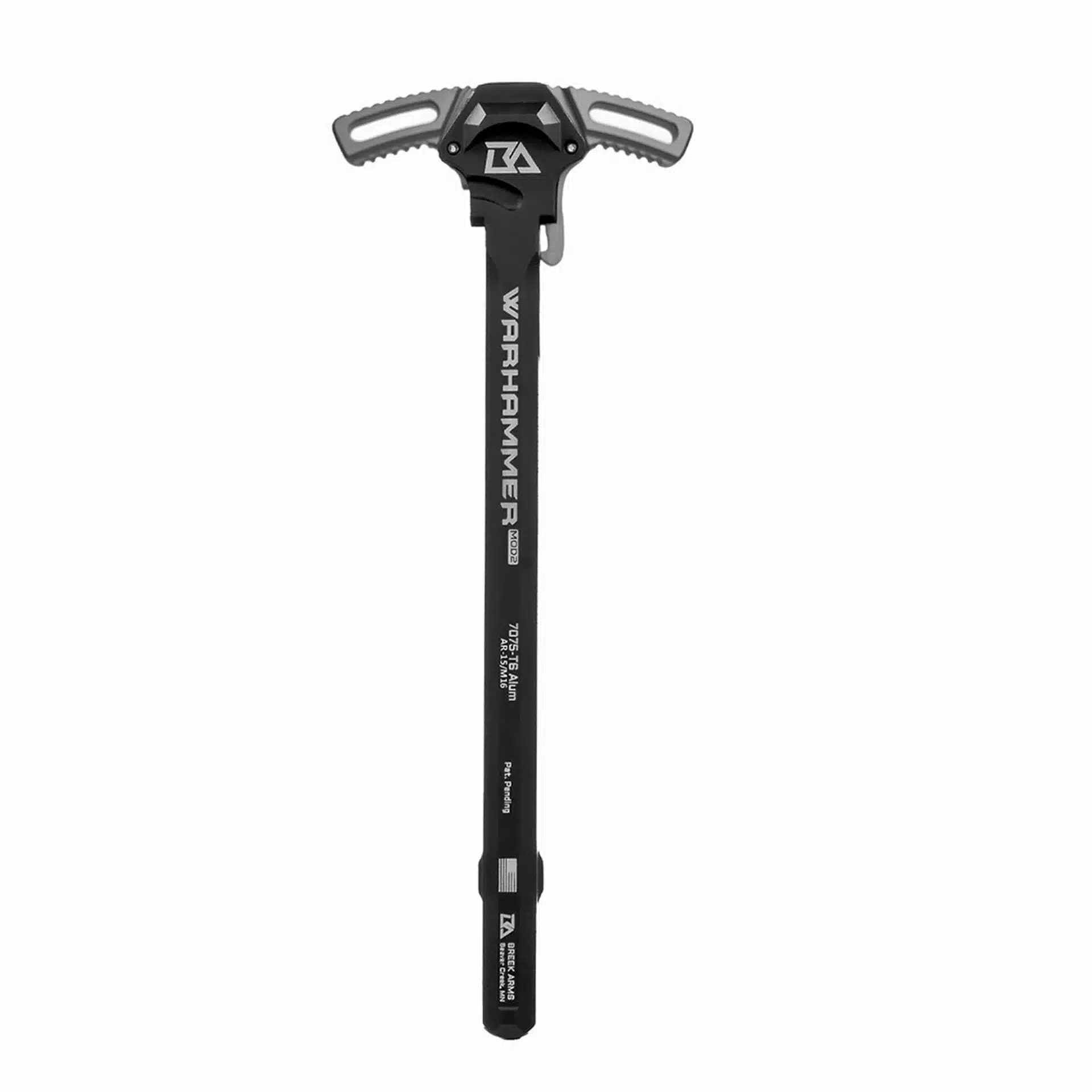
Breek Arms Warhammer Mod 2
AR-15 Discounts (See Price)
Palmetto State Armory (See Price)
BattleHawk Armory (See Price)
Black Rifle Depot (See Price)
You don’t need a hundred-dollar charging handle to ditch the sloppy feel of mil-spec. The Breek Arms Warhammer Mod 2 gives you that real upgrade sensation without gutting your wallet. It’s a true ambidextrous design that feels solid, confident, and intuitive in the hand—something most budget handles just don’t pull off.
For shooters building their first AR or refreshing a range rifle on a tight budget, the Warhammer hits that sweet spot between price and performance. Wide ears and solid construction make it the best sub-$50 pick in the bunch.
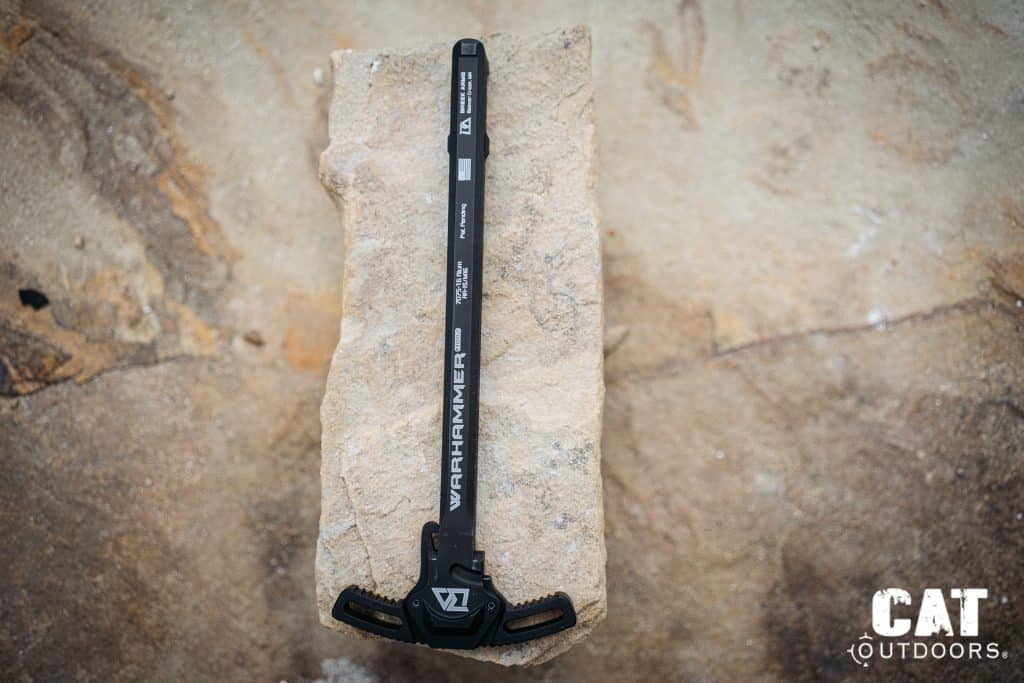
What We Like: It drops into a mil‑spec upper with a reassuringly positive latch and a clean, straight pull. No rattle and no weird binding. From the first cycle it’ll feel like a step up from the stock handle, especially for quick administrative manipulations between strings.
The real selling point here is that you get that upgrade for about half the cost of some other premium charging handles.
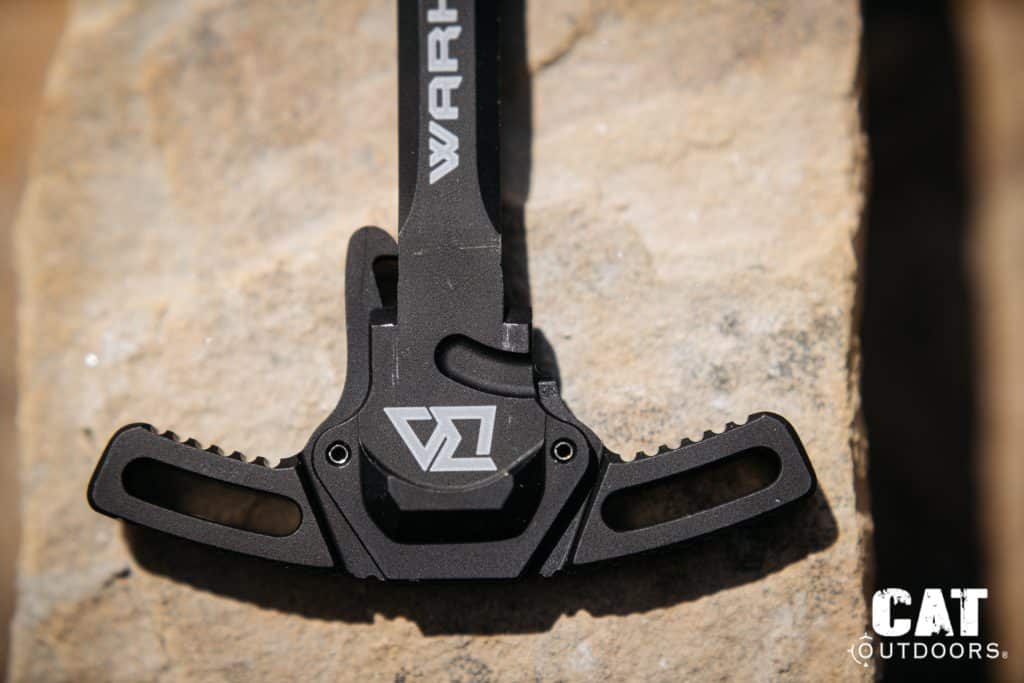
Ergonomics are another selling point. The Warhammer’s levers give you a big, flat surface to blade or pinch, and the traction pattern is aggressive enough to grab with wet or gloved hands without chewing up fabric.
It’s also friendly around optics. The ear shape makes it easy to reach past LPVO turrets or a magnifier; you’re not fishing for a tiny tab behind the glass. On crowded rails, the Warhammer keeps manipulations straightforward and repeatable.

Breek added relief cuts along the body. You still want proper tuning for suppressed setups, but those channels help bleed off a bit of crud and reduce that first sharp puff of gas during rapid fire. It’s a small comfort upgrade.
Finally, the line has options. If the standard Warhammer ears feel a touch generous, the Micro Mod 2 trims the footprint while keeping the same ambidextrous mechanics. Pick the size that matches your gear and carry style.
Flaws but Not Dealbreakers: Width is the biggest compromise. The standard Warhammer’s ears are the widest in this group, which raises snag potential around slings and seatbelts. If you’re snag‑averse or run armor, the Micro Mod 2 or a low‑profile handle like the Geissele Airborne will play nicer.
Refinement lags the premium crowd. The pull isn’t as glassy‑smooth as a Radian or as dialed as BCM’s MK2, and fit/finish can vary a bit from unit to unit. Functionally it holds up, but if you obsess over fine machining, you’ll notice the difference.
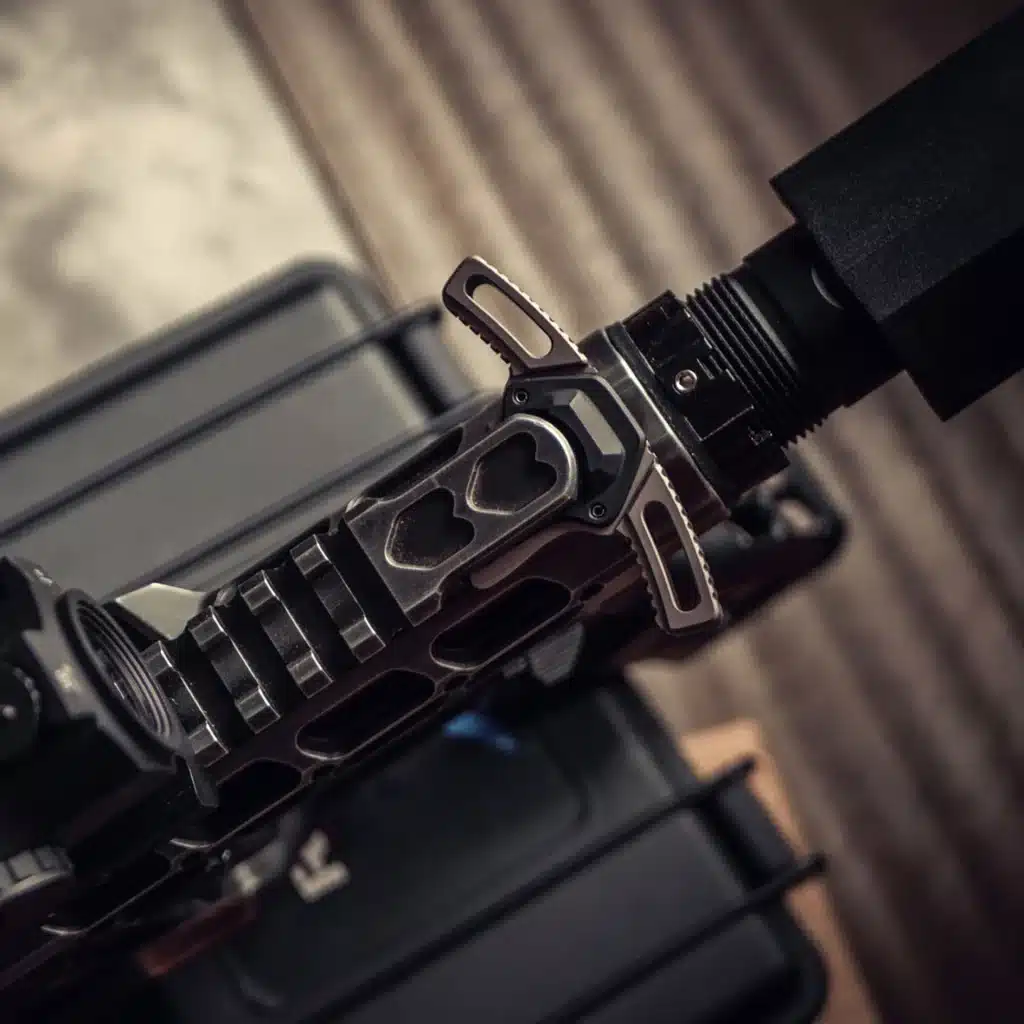
Relief cuts help, but they aren’t a dedicated gas solution. Heavy suppressed shooters will see bigger comfort gains from purpose‑built designs (Raptor SD, BCM MK2) plus proper gas tuning. Treat the Warhammer’s venting as a bonus, not a fix.
Bottom Line: For builders who want a real, tangible upgrade over mil‑spec for under $50, the Warhammer Mod 2 is the best choice. It’s grippy, ambidextrous, and a noticeable improvement for training days and general use. If you carry on kit or hate wide ears, go Micro or choose a low‑profile design; otherwise, this is the budget handle that feels like you didn’t cheap out.
7. BEST SIDE-CHARGING CONVERSION KIT: Devil Dog Concepts Hard Charger
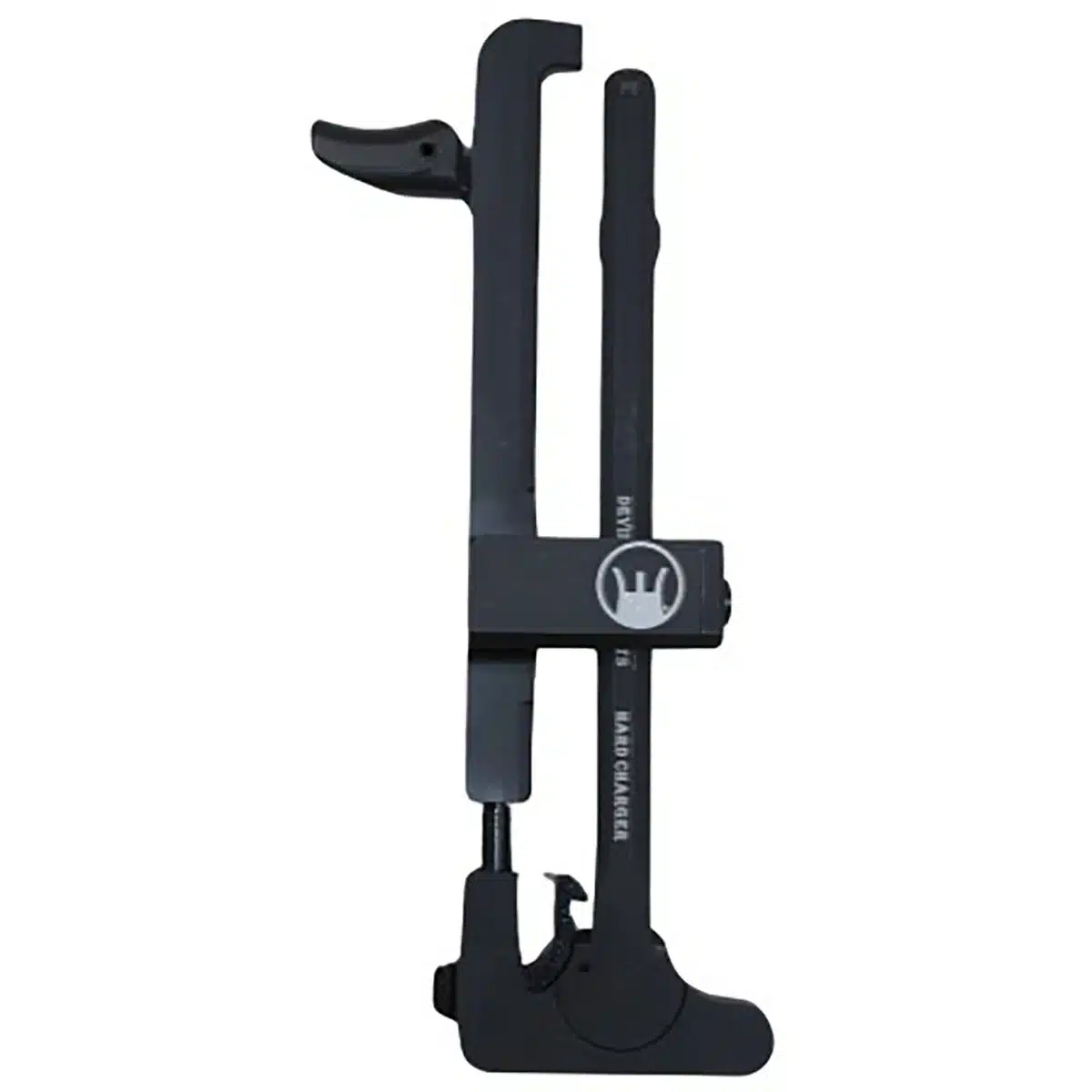
Devil Dog Concepts Hard Charger
Palmetto State Armory (See Price)
Rainier Arms (See Price)
Black Rifle Depot (See Price)
BattleHawk Armory (See Price)
Midway USA (See Price)
Side charging is a personality move that can also be practical: faster gross-motor manipulations, charging without breaking your cheek weld, and a unique look that turns heads at the line. Devil Dog’s Side Charger converts a standard rear-charging AR into a left-side, non-reciprocating style setup.
It’s the cool, functional mod for builders who want that side-charge speed or a distinctive rifle without buying a factory side-charging upper. The defining trait is simple: it moves the interface to the left side of the receiver for one-hand, ergonomic racking and rapid gross-motor clears.
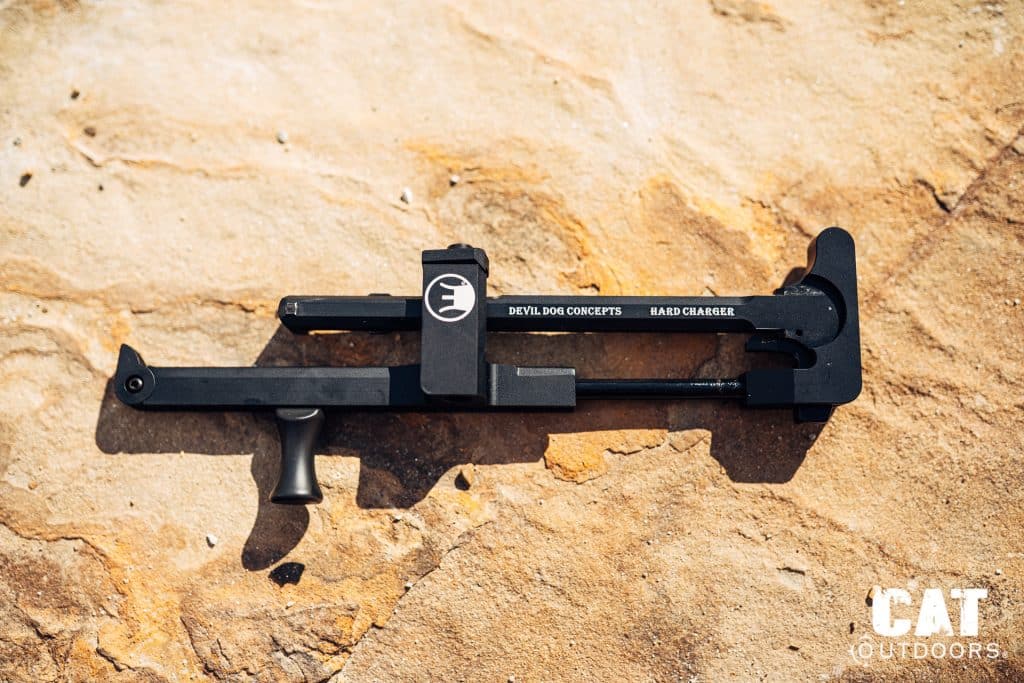
What We Like: The biggest win is speed and gross-motor control. Slamming the side lever is quicker and more intuitive in high-stress or one-handed situations than reaching rearward behind optics. In drills it shortens the motion path and feels more deliberate.
Cool factor is real. The kit gives a plain rifle instant personality; on the line you’ll get questions and second looks. For builders who enjoy unique, purpose-built rifles, that eye appeal is part of the value.
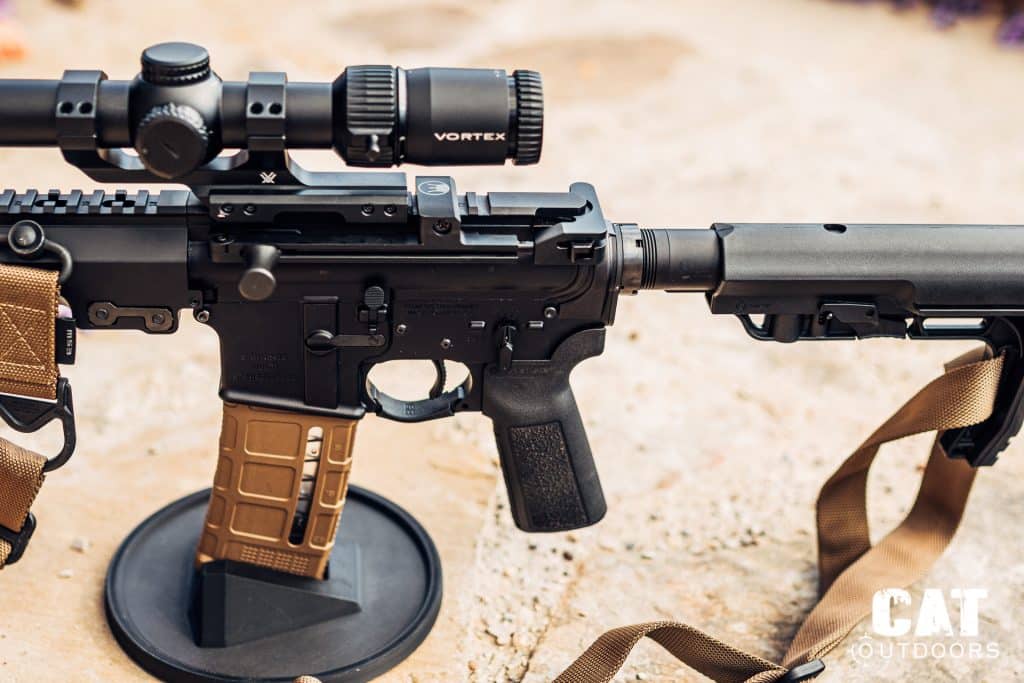
Installation is relatively straightforward for a competent builder. The kit interfaces with the bolt carrier group and rides the upper’s side cut; most installs require basic gunsmith tools and attention to torque/pinning. Expect a little fitting and checklist work—this isn’t a drop-in like a standard handle, but it’s achievable.
The system is non-reciprocating, so you don’t get a moving part slapping you while firing; it’s a charging method, not an extra reciprocating control. That keeps the action clean and the ergonomics predictable.

Functionally, it works with typical manipulations (malfunction clears, one-handed racks, speed charges) and it routes those motions to a more visible, easier surface than a rear-slot tab. For shooters who practice side-charging drills, it becomes faster, not just different.
Flaws but Not Dealbreakers: Bulk and snag potential are the obvious tradeoff. That big lever sits on the left side where slings, clothing, or body-armor can meet it. If you carry the rifle muzzle-down or run tight kit, expect it to catch more than a rear-slot handle.
Out of the box, the action can feel stiff and mechanical. Expect a break-in period and a willingness to tweak springs, clearances, and lubrication. Some builds need minor fitting, i.e. pin alignment or shim work, to run butter-smooth. Plan for a bench session rather than a field install.
It changes how the gun rides and how you index it on a sling. Side charging is ergonomic for manipulation, but it also shifts where your rifle strikes your body and how it tucks on a harness. That matters in truck, vehicle, and armor carry. Consider how you actually carry before committing.
Bottom Line: Grab the Devil Dog Side Charger if you want a functional upgrade that reshapes how you charge and present your rifle—faster gross-motor charging, unmistakable looks, and real practicality for certain drills. If you prize minimal snag, simple drop-in fixes, or zero fitting work, stick with a quality rear ambi handle. But if you want to tinker, stand out, and gain a different set of ergonomics that many users find faster under stress, this kit is a fun, purposeful conversion.
HONORABLE MENTIONS
There’s a few charging handles that didn’t quite make our list as one of the best, but nonetheless are still great options and serve a purpose.
Here’s our notes on other ones you should consider.
Aero Precision Breach (APRA700101C)
Mid‑price ambi with smart durability touches like reinforced 7075 bar, dual‑spring levers, and Small/Large ear options, so it slots between budget handles and the premium crowd. Shooters like the secure grip and the ability to tailor lever size to kit or glove use.
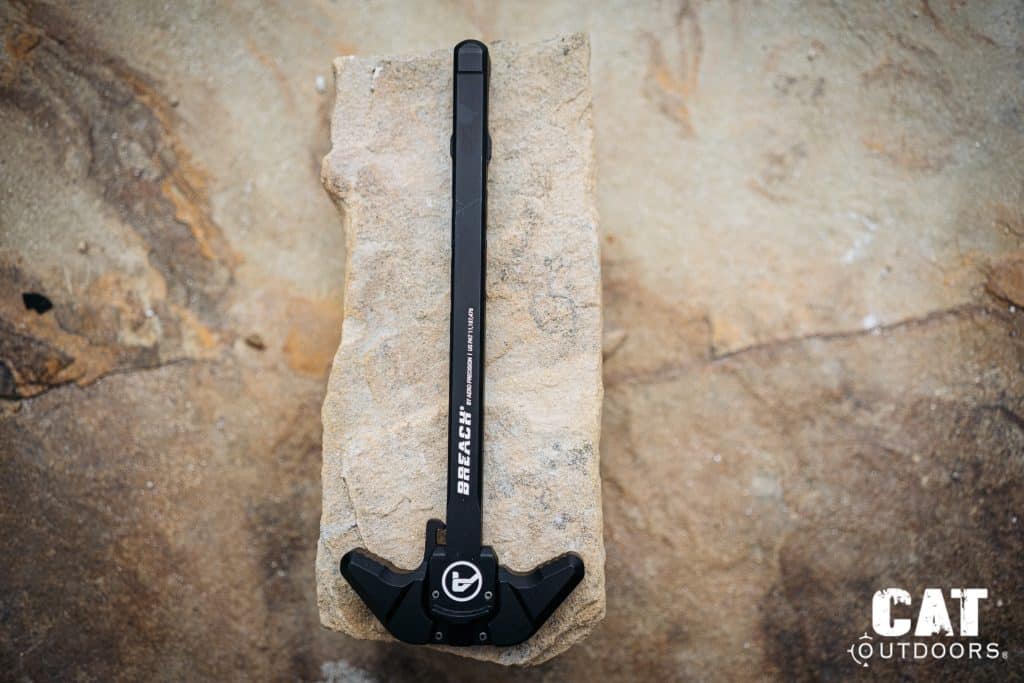
It misses the main list because it doesn’t feel isn’t as silky as Radian, and gas handling isn’t as focused as BCM/Raptor SD. But it’s still a great value pick.
PRI M84 Gas Buster (03‑072‑07DE)
A classic for suppressed rifles. The internal channels redirect gas away from your face, which is why it keeps showing up on precision SBRs and AR‑10s. It has a proven track record and tangible comfort boost under a can.
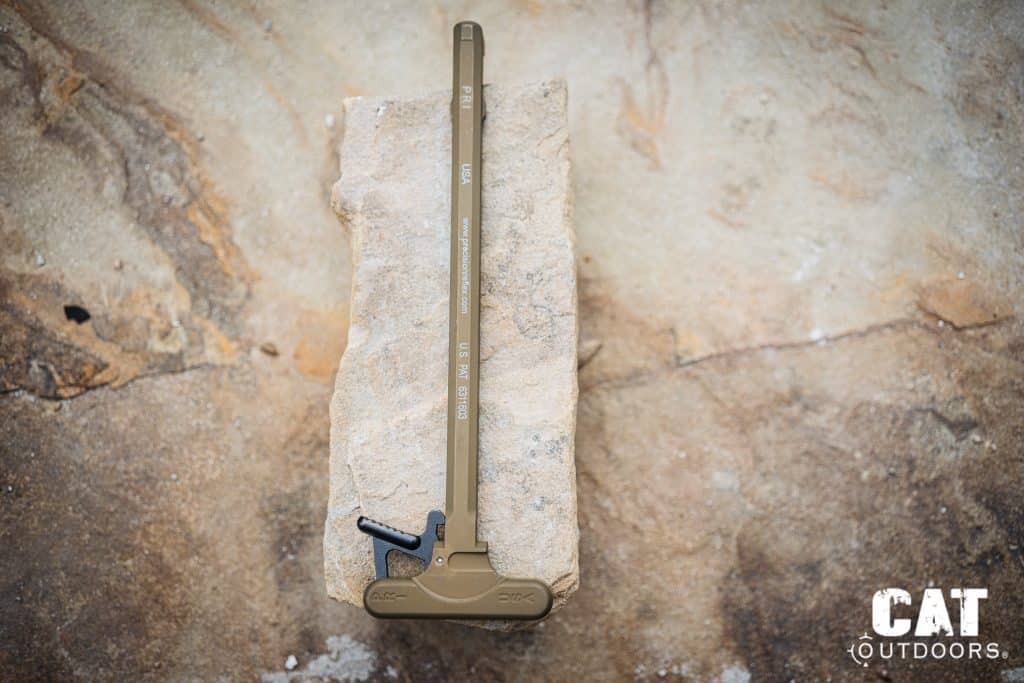
It stays honorable mention because it’s not ambi and its gas routing favors right‑handed shooters, plus the ergonomics feel dated next to modern ambi designs. If you shoot suppressed and don’t need ambi, it still absolutely delivers.
Daniel Defense GRIP‑N‑RIP Charging Handle
Duty‑brand ambi handle with aggressive texturing and built‑in gas‑management features, available in 5.56/7.62 and a lefty‑friendly configuration. Fans appreciate the traction, robust build, and the fact it plays well on hard‑use rifles.
It didn’t crack the top list because it’s “good at many things” rather than best‑in‑class at one—BCM edges it on hard‑use refinement, and Raptor SD beats it for noticeable blowback relief. Still a strong, trustworthy upgrade from a serious manufacturer.
Presma Gold Ambi Charging Handle 223/5.56
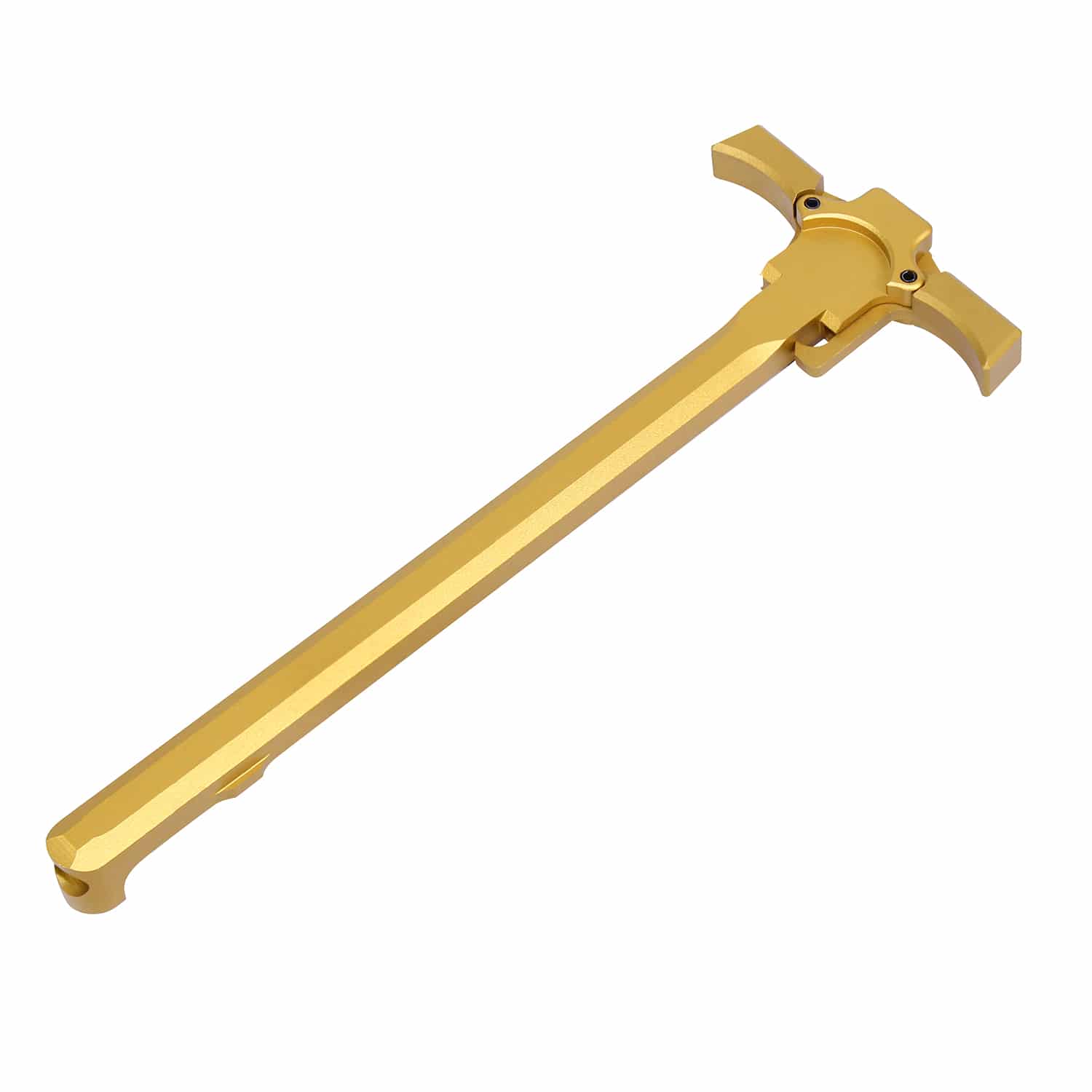
Presma Gold Ambi Charging Handle
Budget ambi that fills a very real niche: style.
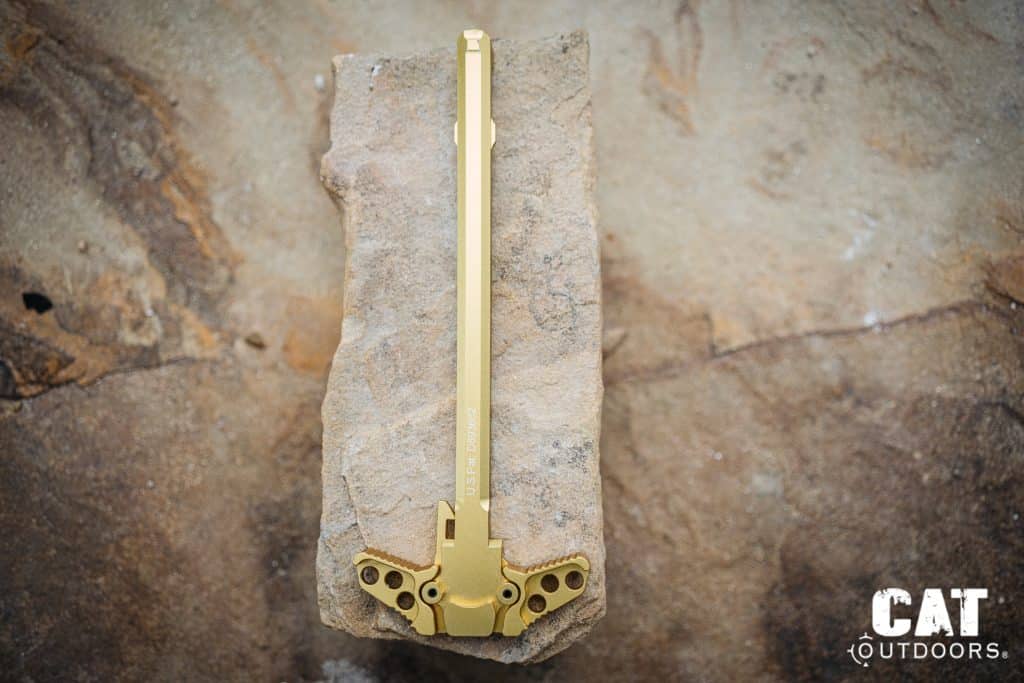
If you’re dressing a fun build or matching a gold BCG, it nails the look while remaining functional for range use. Shooters like the price and the instant visual pop.
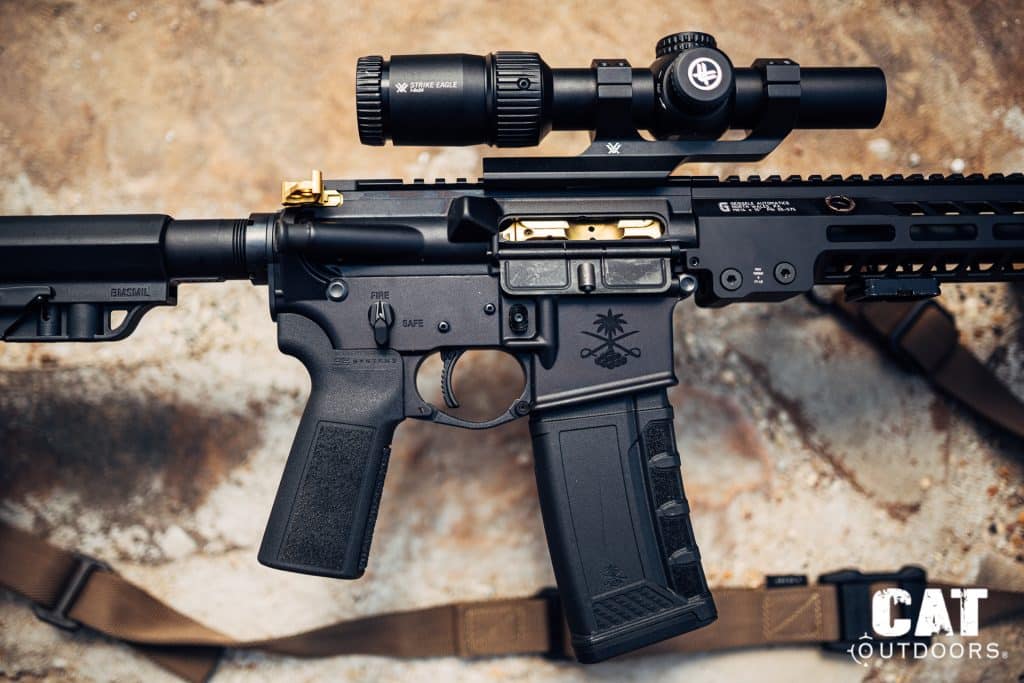
It stays out of the main list because quality control and fit/finish aren’t on par with duty‑grade parts, and the gold tone can vary. Great for bling and casual shooting; not the pick for harsh environments.
Rise Armament RA‑212 Extended Latch Charging Handle

Rise Armament RA‑212
A simple, right‑hand‑biased extended latch that keeps overall width tight—about the same footprint we liked on the Geissele Airborne—so it’s friendly to minimalists and vehicle carry. You get a straightforward install, low snag, and reasonable cost.

It remains an honorable mention because it’s not ambi and lacks modern gas or durability tweaks you get from premium models. Still, it works for a slim, no‑nonsense, right‑handed setup.
FINAL THOUGHTS ON THE BEST AR-15 CHARGING HANDLES
A charging handle is one of those parts that quietly makes your rifle behave. When it’s right, you barely notice it—everything just works. When it’s wrong, you’re fumbling, sore, and wiping gas off your cheek between strings. The difference is small, but it matters every time you run the gun.
If you want a reliable all-around pick that balances feel, durability, and glove-friendliness, the Radian Raptor LT is the handle most people should buy and forget. For crowded optics or plate carriers, the Geissele Airborne trims footprint without sacrificing control.
If your rifle sees daily abuse or high round counts, the BCM Gunfighter MK2 gives you a hard-use, dependable grab that won’t let you down. Suppressed shooters who want a measurable reduction in blowback will appreciate the Raptor SD.
Want pure purchase around big glass? The Geissele Super hands you leverage and confidence. On a budget, the Breek Arms Warhammer Mod 2 is the best under-$50 upgrade. And if you’re after a different ergonomics lane entirely, the Devil Dog side-charger converts your rifle into a faster gross-motor tool.
At the end of the day, pick the handle that matches how you shoot and where you shoot. Install it, run it, and don’t let a tiny part be the weak link.
Got a charging handle that earned your trust—or one that shredded a glove at the worst moment? Drop a comment and tell the story. Which of these would you slap on your next build? We want to hear about it.

Justin Trump is the managing editor and owner of CAT Outdoors. The son of a Vietnam veteran, he’s a Certified Glock Armorer, an avid gun enthusiast and 2A advocate. He holds two firearm patents for the CAT M4 and Talon tools. When not managing CAT Outdoors, he enjoys spending time with his family and friends, rooting for Michigan sports teams, and serving his church.

